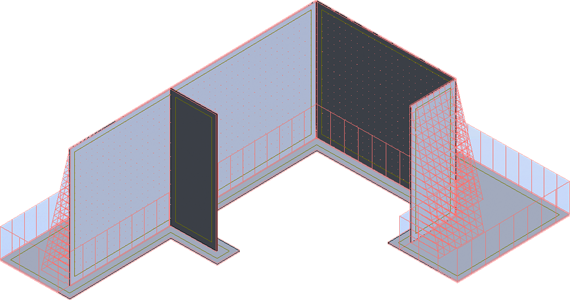Retaining wall is described as a fairly hard wall. It is constructed to give support to the soil mass horizontally to hold the soil at various levels on the two sides.
The following topics are covered in this construction article :-
• Types
• Design
• Modes of Failure
Types of retaining wall:
Usually the retaining walls are categorized as follow :-
Gravity Retaining Wall: Here weight is the key factors for these walls to maintain durability. In general, the walls are developed with plain concrete or masonry. For the structures having long height, these walls may be quite expensive.
Semi-gravity Retaining Wall: The section size regarding a gravity retaining wall is decreased with the placement of the fewer amount of adjacent to the back face. Such walls can be termed as semi-gravity walls.
Cantilever Retaining Wall: The Cantilever retaining walls are mainly developed with reinforced cement concrete. The wall comprises of a lean stem together with a base slab cast monolithically. For the construction that contains a height of 6 to 8 m, this type of wall is cost-effective.
Counterfort Retaining Wall: In Counterfort Retaining walls, there are lean vertical slabs alias counterforts which are positioned over the vertical steam recurrently. The counterforts join the vertical stem by the base slab. Hence, the vertical stem and the base slab extend amid counterforts. Here the counterforts are used to reduce the shear force and bending moments in the vertical stem and the base slab. The structures which contain a height over 6 to 8 m, the counterfort retaining walls are economical.
Guidelines for designing retaining walls: Before developing the realistic design, the soil parameters which can impact the earth pressure and the bearing capacity of the soil, must be analyzed properly. The soil parameters contain the unit weight of the soil, the angle of shearing resistance, the cohesion intercept and the angle of wall friction. The soil parameters are liable for detecting the lateral earth pressures and the bearing capacity of the soil. As soon as the earth pressures are detected, the retaining walls should be verified completely to find out the strength toward sliding, overturning, bearing capacity failure & tension.
Other modes of failure of retaining walls
Besides, three types of failures like sliding, overturning and bearing failure, the following two modes are also liable for collapsing of a retaining wall in case the soil below is feeble.
Shallow Shear Failure: This type of failure takes place along a cylindrical passing with the heel of the retaining wall owing to the extreme shear stresses along the cylindrical surface inside the soil mass. Usually the cause for safety alongside horizontal sliding is reduced contrary to the shallow shear failure. Due to this, if the factor of safety alongside sliding exceeds by 1.5, shallow shear failure will not occur.
Deep shear failure: It happens along a cylindrical surface, if there exists a feeble layer of soil below the wall a depth regarding 1.5 times the height of the wall. The trial and error processes are applied to ascertain the critical failure surface.
Ref : www.civileblog.com
 |
~~~~~~~~~~~~~~~~~~~~~
Published By
Rajib Dey
~~~~~~~~~~~~~~~~~~~~~
No comments:
Post a Comment